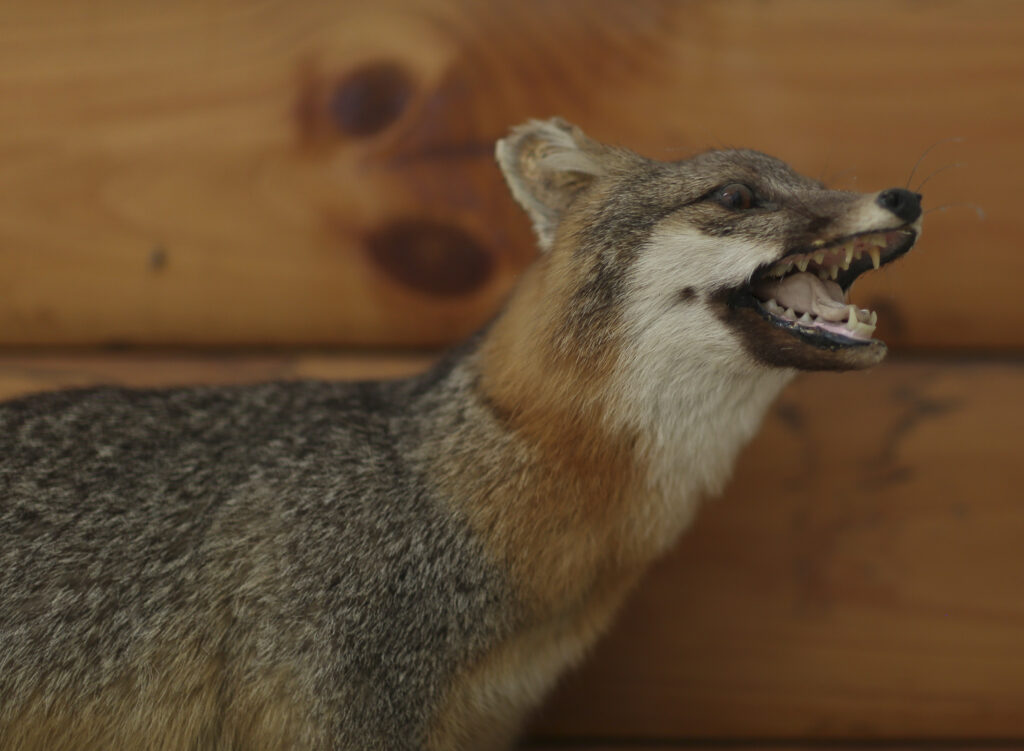A Hidden Animal

By Wayne Bierbaum
Several years ago, just before sunrise, I drove past a drainage pond in Edgewater and caught a glimpse of a shadowy dog-like animal sneaking along the inside of the fence.
I pulled over and watched as a gray fox hunted for frogs along the water’s edge, but I was not able to get a photo. In my usual determined fashion, I returned to the spot four times but never saw the animal again.
That was my first and only contact with a live gray fox in Maryland (the photo above is of a taxidermied specimen). I saw a few of them while I lived in Florida and one while I vacationed in Austin, Texas. I have read that they avoid areas inhabited by humans. They are a shy nocturnal species and prefer dense hardwood forests and are therefore rarely seen.
The gray fox is an interesting species. They have shorter legs and a stouter torso as compared to the red fox. Their coarse stiff hair is not suitable for the fur industry. Unlike the red fox, a gray fox has long curved retractable claws that enable them to be good tree climbers.
Gray foxes have round pupils and better night vision than the red fox which has slit pupils. The name comes from the animal’s gray face and sides. Also, they have a black back and black-tipped tail, while the red fox has a white-tipped tail.
The gray fox is an omnivore and in certain locations, especially in the desert Southwest, they feed mostly on insects, fruit, and grains. In Maryland, they largely hunt small animals from frogs to rabbits but will supplement with fruit, nuts, and insects.
Gray foxes do not dig burrows but prefer denning in dense underbrush or tree hollows. They are solitary animals but in late winter they pair for procreation. Two to six blind young are born in mid-summer and are cared for by both parents. As they mature, the mother teaches the kits survival and hunting skills. By the end of the summer, the young start to separate from their parents.
To communicate with each other, gray foxes will make a short bark or yelp. They are much quieter than the red fox. Gray foxes do leave scent markings all around their territory which is described to be a skunklike smell.
If you see a fox in a tree with round pupils, a black tail, and short legs, it is most likely a gray fox.
